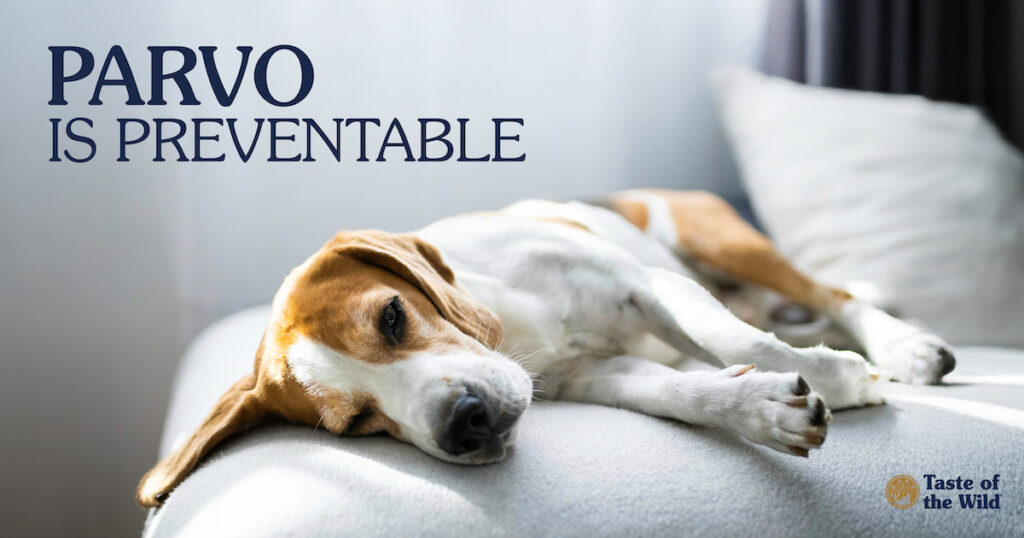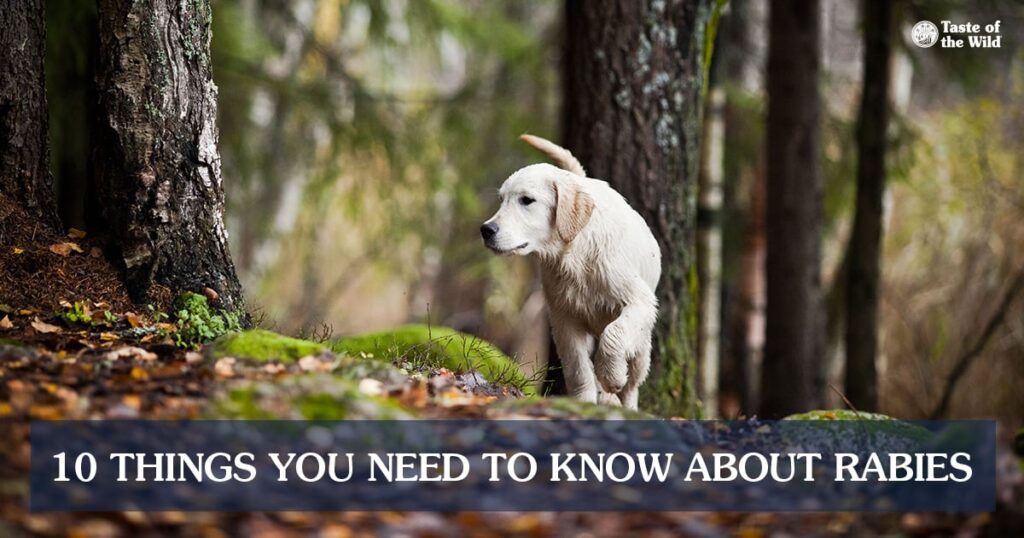
One of the scariest things a pet parent can hear is that their puppy has parvo. This aggressive infection can quickly turn a healthy, playful pup into a very sick puppy that requires hospitalization. Parvo can also cause severe illness in adult dogs, but the good news is that a vaccine is available to protect puppies and dogs against canine parvovirus.
What Is Parvo?
Parvo, or canine parvovirus, is a highly contagious disease that affects dogs and their wild cousins, like wolves, foxes and coyotes. The virus attacks the rapidly dividing cells of a dog’s body, particularly the bone marrow and small intestine, causing a potentially deadly disease of the digestive system. It often affects puppies between 6 and 20 weeks of age, but any unvaccinated dog can be infected with parvovirus.
Is Parvo Contagious?
Yes, canine parvovirus is a highly contagious virus that is also hard to kill. It’s shed in the feces of an infected dog — even if the dog isn’t showing symptoms yet. It’s a hardy virus, and, in the right conditions, can survive in the environment for many months. Parvovirus is resistant to many household disinfectant cleaners, making it hard to decontaminate areas that an infected dog has been in. If your dog has been diagnosed with parvo, ask your veterinarian about the best way to disinfect your dog’s environment.
How Do Dogs Get Parvo?
When we say the virus is spread through direct contact with feces, it might be less obvious than you think, as the virus can remain on surfaces after the feces is gone. Consider this scenario: a responsible owner picks up their infected dog’s feces at the dog park, not realizing that the dog is infected — they’re not showing symptoms yet — and they’re leaving the virus behind. Later, another dog and their owner walk on the same area, so they are now carrying the virus on their paws and shoes. The owner and the dog go home, unknowingly carrying the virus with them and increasing the likelihood that the dog ingests the virus and becomes infected.
It’s common for transmission of parvovirus to occur when dogs touch objects that have been contaminated with the virus, including bedding, bowls, toys, leashes and other objects. Parvovirus can also survive on the clothing or hands of people who have interacted with infected dogs. That’s why it’s important to practice good hygiene and keep your dog away from any sick dogs. You should also wait until your dog is vaccinated against parvovirus (and other diseases) before taking them to dog parks, pet stores, the groomer, obedience classes or anywhere else that dogs visit. If you arrange a puppy play date, make sure all dogs have been vaccinated first.
Canine Parvovirus Symptoms
The early signs of parvovirus infection can easily be confused with an upset stomach. If your dog has any of the symptoms below, have them checked out by your veterinarian — especially if they’re a young puppy or an adult dog who hasn’t been vaccinated against parvovirus. Incompletely vaccinated dogs — those who haven’t completed their vaccination series — can also contract the virus. Observation of clinical signs, a physical examination and a fecal sample can confirm a parvo diagnosis.
Parvo Symptoms in Dogs
- Lethargy (tired all the time)
- Loss of appetite
- Abdominal pain and bloating
- Fever
- Vomiting
- Foul-smelling and often bloody diarrhea
- Rapid dehydration
- Low body temperature (occurs during the later stages of illness)
Stages Of Parvovirus in Dogs
There are multiple stages of parvovirus. After initial infection with the virus, there is an incubation period that typically lasts around 3–7 days. During the early stages of infection, possible symptoms include becoming tired easily, not playing or eating, and fever.
As the virus continues replicating and invading bone marrow and the cells of the small intestine, dogs will start vomiting and have foul, sickly-sweet smelling diarrhea that often has blood in it. Dehydration is likely at this stage, especially in young dogs. Without treatment, dogs will typically become severely dehydrated, go into septic shock and succumb to the infection. Early treatment is essential to give dogs the best chance of survival.
Parvo Treatment for Dogs
There are no traditional drugs that cure parvovirus, but a monoclonal antibody treatment specifically targeting canine parvovirus is now available. This treatment works by binding to the virus and helping the immune system neutralize it. It is most effective when given early in the course of infection and is used alongside supportive care. Supportive treatment such as hospitalization, intravenous fluids to correct dehydration, electrolyte replacement, anti-nausea medications, and antibiotics to prevent secondary infections remains essential. Whether hospitalized or treated at home, it’s important that dogs with parvo are isolated so they don’t spread the virus to other dogs while they’re in recovery.
Unfortunately, despite treatment, around 10 to 15 percent of dogs won’t survive a parvovirus infection. If dogs don’t receive any treatment, the survival rate goes down to less than 10 percent. Treatment is also expensive, which is why vaccination against canine parvovirus is recommended for all dogs as one of their core vaccines.
Preventing Canine Parvovirus Infection
If a mother dog has received a parvovirus vaccine, she may pass on antibodies to her puppies through her milk, but this won’t protect the pups for very long. That’s why prevention of canine parvovirus infection is best achieved by vaccination. The core vaccines recommended for all dogs protect them against canine parvovirus as well as distemper and canine adenovirus (hepatitis). A combination vaccine (called DAP or DHP) is available, so dogs can be protected against all three diseases in a single dose. Some combo vaccines (DAPP or DHPP) also include parainfluenza virus, which is a non-core vaccine. A non–core vaccine may be recommended by your veterinarian based on your dog’s age, lifestyle, geographic location and risk of exposure. Booster vaccines may be given at your dog’s annual checkup.
It’s important to practice good hygiene, especially if you have been around a sick dog. Parvovirus can contaminate clothes, so make sure you change your clothes and wash your hands well before going near your dog. You should also avoid letting your dog near other dogs’ feces and keep them away from sick dogs.
We hope your dog never has to experience the devastating effects of parvo. Ask your veterinarian which vaccinations are recommended for your pup or dog to help prevent heartbreaking infectious diseases like parvo.


